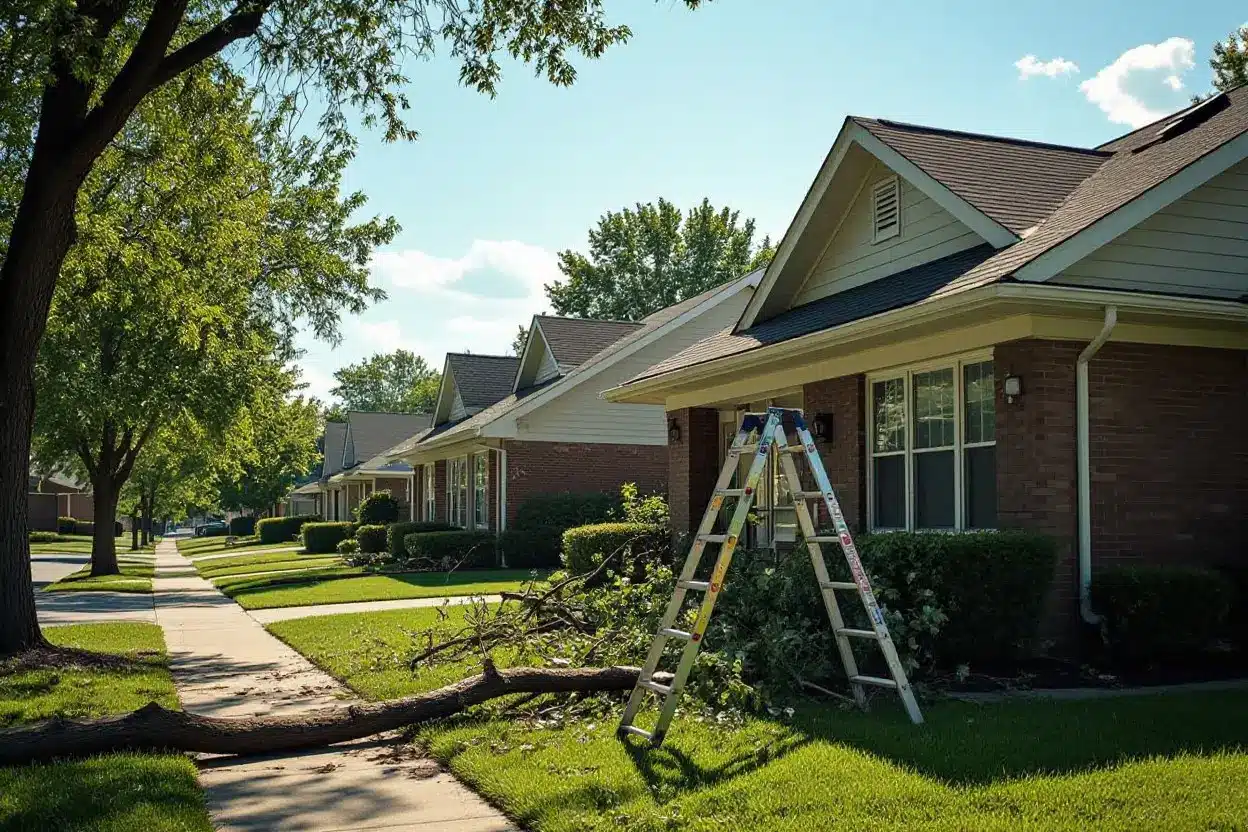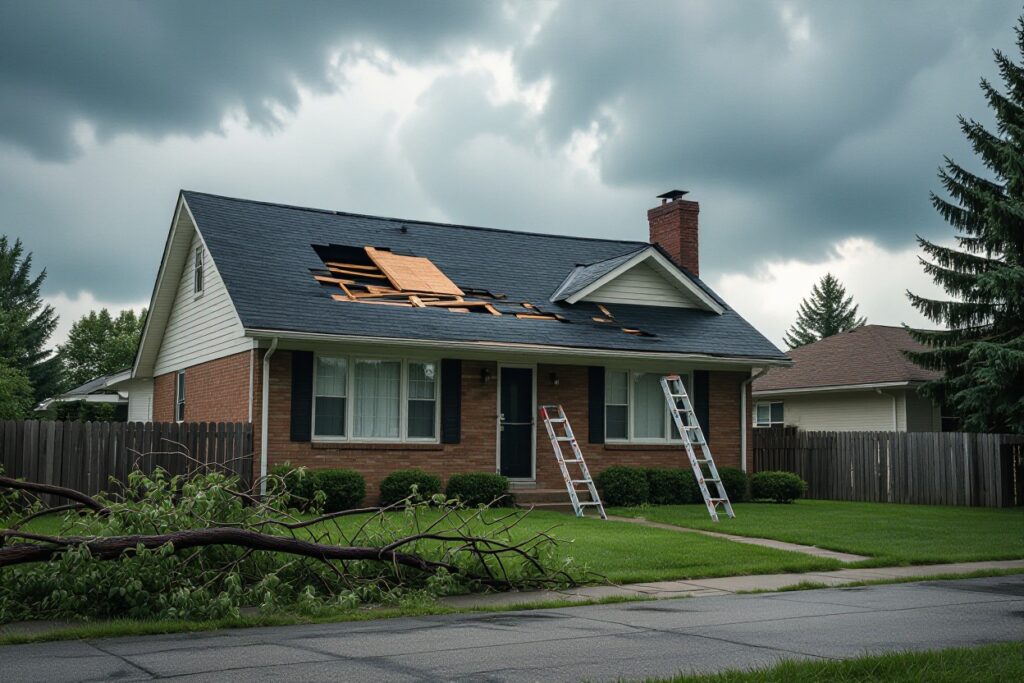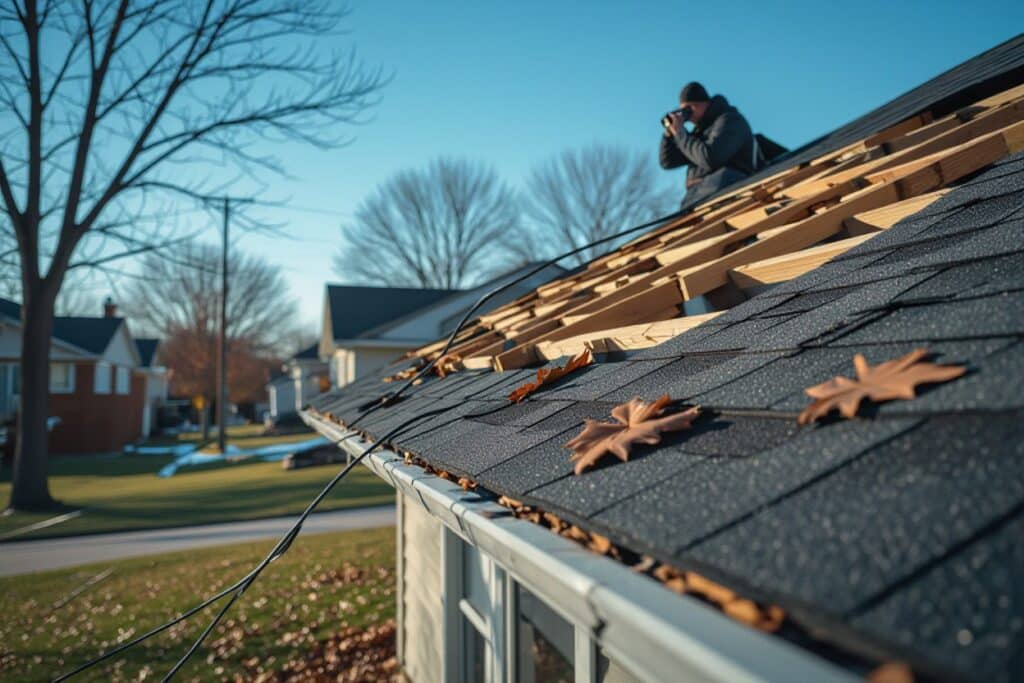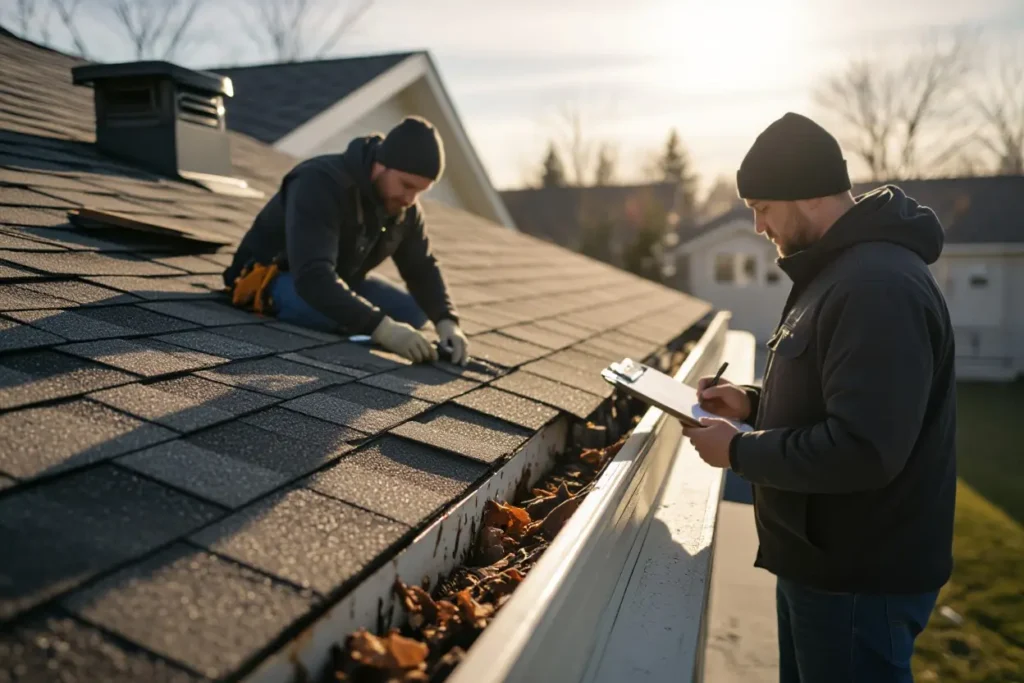Top Signs Your Roof Needs Repair After A Summer Windstorm

With summer windstorms sweeping across Winnipeg, you need to inspect your roof for missing shingles, torn flashing, and sagging that can cause dangerous leaks and structural failure; check your attic, gutters, and exterior for debris and daylight, and note any new drafts or stains. If you spot damage, you should act quickly to protect your home and avoid costly replacement—call All Weather Exteriors, Winnipeg’s #1 roofing company, your go-to experts whenever your roof needs repair.
The Subtle Signs of Wind Damage
After a Winnipeg windstorm, not all roof damage is obvious from the street—often the earliest indicators are small and easy to miss. You should look for lifted shingle edges, scattered granules in downspouts, and faint cracks in the shingle surface, because these subtle defects are how wind begins to compromise your roof’s protective layer.
Your attic and interior offer important clues: shafts of daylight, fresh water stains, or a musty smell point to breaches you might not see externally. If you spot any of these signs, acting quickly to document and secure the area can prevent water infiltration and larger, costlier repairs.
Hairline Cracks and Loose Shingles
Wind flexes and lifts shingles, producing hairline cracks and loosened tabs that may seem minor but allow wind to catch and tear the shingle away. In Winnipeg’s frequent gusts, what starts as a tiny split can turn into a missing shingle section within one more strong blow.
Check your gutters and roof perimeter for granule loss, curled edges, or shingles that shift underfoot when you do a safe ground-level inspection with binoculars. Photograph damage, avoid walking on an unstable roof, and contact a professional to assess whether spot repairs or replacement are needed.
The Deterioration of Flashing Components
Flashing—the metal seals around chimneys, vents, skylights, and roof valleys—takes a beating from wind-driven debris and repeated freeze-thaw cycles common in Winnipeg. When flashing becomes loose, cracked, or the sealant fails, water can bypass your shingles and enter the roof deck, causing hidden rot and mold.
Look for peeled or rusted flashing, gaps at seams, and degraded or absent sealant; these are signs that wind has undermined the barrier. Even small gaps are dangerous because they allow persistent leaks that worsen over time, so prioritize inspection after a storm.
To protect your home until a professional repair is arranged, you can apply temporary flashing tape or a tarp over the affected area, but these are short-term measures only. For lasting repair in Winnipeg’s climate, have your flashing professionally resealed or replaced to restore waterproofing and prevent structural damage.

Unseen Dangers: Damage Inside and Around Your Home
After a summer windstorm in Winnipeg, visible roof damage is only part of the problem; you also face hidden threats that can undermine your home’s integrity. Wind-driven rain, displaced shingles, and loosened flashing can let water into your attic and wall cavities, leading to soaked insulation, rotted sheathing, and compromised roof framing long before you see obvious exterior signs.
Because Winnipeg’s seasonal temperature swings accelerate deterioration, what starts as a small leak can quickly become a major repair. If you spot any loose debris, sagging soffits, or missing flashing, treat it as an urgent sign that internal damage may be progressing and arrange a professional inspection to limit further loss.
Water Stains and Ceiling Leaks
Brown or yellow water stains, peeling paint, or bulging drywall on your ceilings and walls are clear indicators that water has breached your roof. If you notice a musty smell, damp insulation in the attic, or active dripping, those are high-priority signs of an ongoing leak that require immediate attention to prevent more extensive damage.
In Winnipeg, brief heavy storms can saturate materials quickly, so check your attic after a windstorm for wet insulation, daylight through roof sheathing, or rusted nails. Documenting stains and photographing leaks will help when discussing repairs with a roofer and your insurer.
Mold Growth and Structural Weakness
Where moisture persists, mold can develop within 24–48 hours, damaging organic materials and posing health risks to your household. Black, fuzzy spots in attic framing, discolored insulation, or a persistent mildew odor signal that mold has already taken hold and that moisture sources must be stopped immediately.
Beyond surface mold, prolonged water exposure softens wood, weakens fasteners, and can compromise rafters and trusses—creating structural weakness that affects the safety of your roof. In Winnipeg’s climate, freeze-thaw cycles make weakened structures more likely to fail under snow load if left unrepaired.
For remediation, you should stop the leak, dry and dehumidify affected spaces, remove contaminated insulation, and have a qualified contractor assess framing and roof assemblies; professional evaluation and repair are the best ways to protect your home’s structure and your family’s health.
The High Cost of Ignoring Repairs
If you ignore storm damage after a summer windstorm in Winnipeg, what starts as a few missing shingles can quickly become water intrusion, interior damage, and structural compromise. Manitoba’s freeze-thaw cycles and follow-up storms accelerate deterioration, so delays mean the problem spreads beyond the roof into insulation, ceiling, and framing.
Putting off repairs also creates a safety risk for your household and can trigger insurance complications if damage worsens before a claim is filed. Acting promptly with professional repairs will protect your investment and often save you thousands compared with the escalating costs of deferred work.
Escalating Repair Costs Over Time
Small exterior issues—lifted shingles, torn flashing—often hide deeper failures: once the underlayment or decking is compromised, repairs move from cosmetic to structural. The longer you wait, the more likely you’ll face underlayment failure, deck rot, and interior finishing replacements rather than a simple shingle patch.
Costs tend to increase nonlinearly: emergency tarping, weekend call-out rates, and extended contractor timelines drive prices up quickly. In Winnipeg, seasonal snow loads and freeze cycles can convert a repairable leak into a full reroof job, so delaying work often means paying for a much larger project later.

Long-Term Consequences for Home Value
Visible roof damage and evidence of past leaks directly reduce curb appeal and appraised value. During a sale, inspectors and buyers will factor in failed inspections and may request buyer concessions or price reductions. What you don’t see—mold, rot, compromised structure—can surface during disclosure or inspection and dramatically lower offers.
Persistent roof issues can also raise your insurance premiums and make your property harder to sell, especially in Winnipeg’s competitive market, where buyers expect homes to withstand harsh weather. Neglecting repairs often converts a manageable expense into a long-term value drain.
To protect the resale potential of your home, consider getting a professional inspection, maintaining detailed repair records, and securing any available warranty or certification after the work is done. These steps will increase your home’s marketability and reassure buyers and insurers that the roof has been properly maintained.
Your Essential Checklist After a Winnipeg Windstorm
After a windstorm in Winnipeg, you should first prioritize safety: keep clear of downed power lines and unstable trees and avoid climbing onto the roof. If you see sagging, active leaks, or exposed electrical wiring, treat the situation as dangerous and keep everyone away from the area. Take clear photos of all damage from ground level and inside the home to support any insurance claim.
Next, perform a quick perimeter check for loose shingles, missing flashing, blocked gutters, and displaced siding. Documenting damage promptly and applying temporary protection like tarps can prevent further loss while you arrange a professional inspection or emergency repair.
Inspecting for Visible Damage
Walk the property perimeter and scan the roofline with binoculars from the ground to spot lifted or missing shingles, broken vents, dented soffits, and cracked chimney mortar. Look for granule loss in downspouts and large areas of exposed underlayment as signs you need roof repair.
Check inside your attic and top-floor ceilings for new water stains, damp insulation, or light coming through the roof deck. Sagging ceilings, pooling water, or mold growth are dangerous signs that require immediate attention.
When to Call in the Professionals
You should call a licensed roofing contractor if you find structural damage, large areas of missing shingles, active interior leaks, or any condition that risks collapse. Active leaks, roof deck exposure, and electrical hazards are the most dangerous issues and demand professional response.
For Winnipeg residents, contacting experienced local teams speeds emergency tarping, accurate damage assessment, and insurance documentation. All Weather Exteriors, Winnipeg’s #1 roofing company, can provide prompt inspections, temporary protection, and reliable repair estimates.
When you call a professional, expect a safety-first site assessment, clear photos, and a written estimate, and immediate temporary measures if needed (tarps, bracing). The crew should advise on insurance filing, expected repair timelines, and permit needs so you know what to expect next; fast, well-documented action reduces further damage and gets your home back to safe condition sooner.
Choosing the Right Roofing Expert in Winnipeg
After a summer windstorm, you need a contractor who understands Winnipeg’s unique weather and building codes; when you hire someone local, you get faster assessments and better protection against recurring wind damage. Prioritize firms that show proof of licensing, insurance, and a track record of windstorm repairs — unlicensed contractors and storm chasers are dangerous and can leave you with substandard work or denied insurance claims.
Look for a company that communicates clearly about timelines, materials, and guarantees so you can make informed decisions quickly; as a Winnipeg residen,t you want a roofer who will handle permits and liaise with insurers if needed. If you value experience and reliability, consider established local teams such as All Weather Exteriors, who combine local expertise with manufacturer certifications and robust warranties.
Evaluating Credentials and Experience
Verify that the contractor carries current liability insurance and workplace safety coverage — no insurance or missing WCB/WSIB coverage is a red flag that exposes you to financial risk. Ask for proof of licensing, manufacturer certifications for the roofing systems they install, and a portfolio of recent windstorm repairs in Winnipeg so you can confirm they’ve handled the exact challenges your roof faces.
Check references, online reviews, and complaint histories with local consumer agencies; consistent positive reviews and long-term local presence indicate workmanship and customer service you can trust. Request examples of completed jobs, names you can call, and a clear explanation of warranty terms so you can compare experience and outcomes across bidders.
Ensuring Comprehensive Coverage and Transparency
Insist on a detailed, written estimate that breaks down labor, materials, removal costs, and permit fees — a clear, itemized contract protects you from surprise charges and scope creep. Confirm who will obtain permits, perform inspections, and handle insurance documentation; contractors who offer insurance-claim support can reduce delays and increase the likelihood of full claim approval.
Avoid contractors who request large upfront payments or only offer verbal commitments — vague contracts and high deposits are dangerous signs that work may stop mid-project or be of poor quality. Favor companies that provide progress timelines, photo documentation during repairs, and a written warranty that specifies coverage and duration so you know exactly what’s protected.
When you review a final proposal, make sure it includes an explicit scope of work, brand and grade of materials, expected completion date, payment schedule tied to milestones, and contact information for post-installation service; this level of transparency is a strong positive indicator that your repair will be handled professionally and backed if issues arise.

Final Words: When Your Roof Needs Repair
With these considerations in mind, you can quickly identify when a summer windstorm has damaged your roof—missing or lifted shingles, granule loss in gutters, bent or loose flashing, interior stains or drips, and any sagging or soft spots—and take action to limit water intrusion and further structural harm. Inspect cautiously from the ground or arrange a professional evaluation if you detect any of these signs, since prompt assessment typically reduces repair scope and cost.
If you live in Winnipeg, rely on All Weather Exteriors, the number 1 roofing company in Winnipeg, to assess your roof and provide timely repairs tailored to local weather patterns; using a trusted contractor helps ensure your roof withstands Manitoba’s wind, freeze–thaw cycles, and heavy snowfall and protects your home and investment throughout the year.

Leave a Reply
You must be logged in to post a comment.